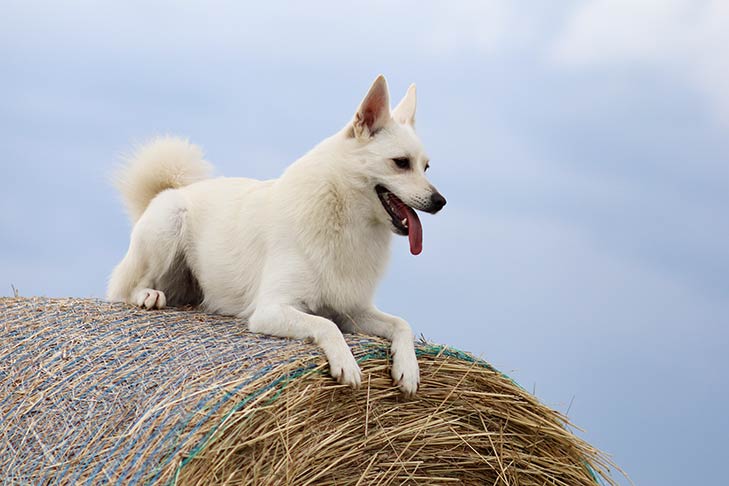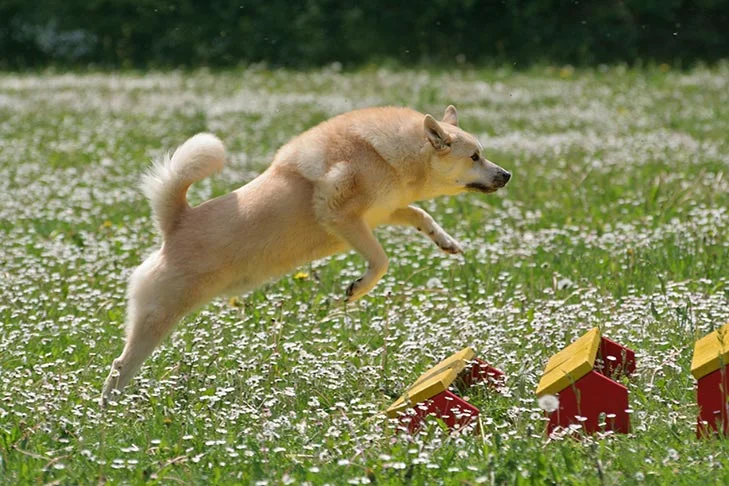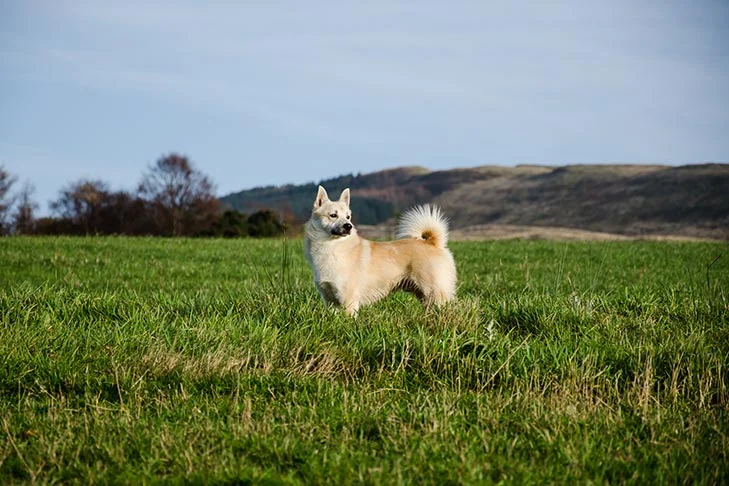The heavy-coated Norwegian Buhund is a medium-sized cold-weather workhorse that is skilled at guarding and herding. It is a Nordic spitz-type closely related to the Vikings. Buhunds make excellent family dogs because they are perceptive, gentle, and tenacious. The Buhund, a typical spitz, offers a nice chance to define the phrase. Spitz is cold-weather breeds distinguished by a dense coat, a tail curled firmly over the back, a wedge-shaped head, and erect, pointed ears (‘spitz’ means ‘pointed’ in old German). They come in a variety of sizes, including tiny Pomeranians, powerful Malamutes, and medium-sized breeds like the lean yet robust Buhund. Males can weigh up to 40 pounds and stand 18.5 inches tall. Black or wheaten are the hues of coats.
Norwegian Buhund
Average sizes and life
expectancy of the breed.
Height
17-18.5 inches (male)
16-17.5 inches (female)
Weight
31-40 pounds (male)
26-35 pounds (female)
Life Expectancy
12-15 years
Breed Traits & Characteristics
About the Breed

Owning a dog is not just a privilege; it’s a responsibility. They depend on us for, at minimum, food and shelter, and deserve much more. When you take a dog into your life, you need to understand the commitment that dog ownership entails.
 Health
Health
Recommended Health Tests From the National Breed Club:
- Hip Evaluation
- Ophthalmologist Evaluation
 Grooming
Grooming
 Exercise
Exercise
 Training
Training
 Nutrition
Nutrition
History
The romantic legends of the Buhunds who sailed with the Vikings, those Nordic invaders whose lightning raids terrorized Europe some 1,200 years ago, are true. Buhunds are, at their core, homebodies, even though they may have relished plundering and pillaging their way across the continent alongside Vikings (Buhunds appreciate any activity they can do with their owners!). In fact, the word “Buhund” comes from the Norwegian word “bu,” which means “homestead” or “farm.” For generations, Buhunds were used as herders, family protectors, and general agricultural workers.




